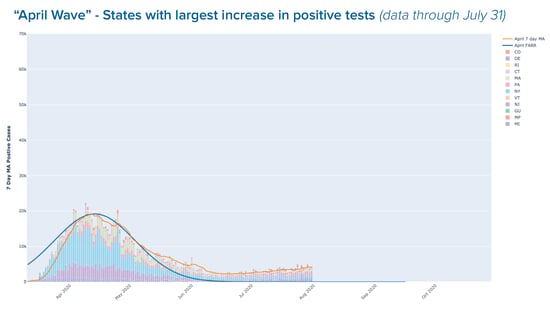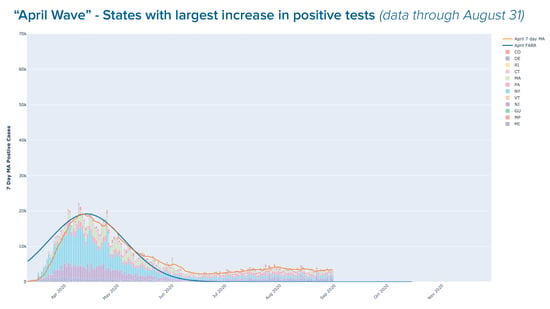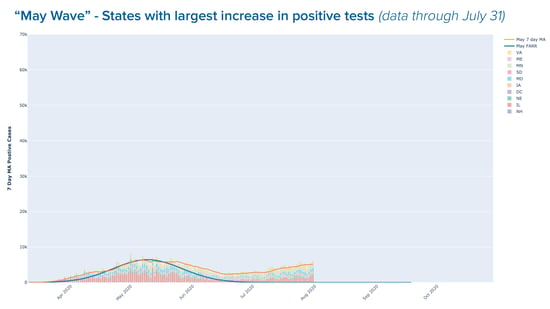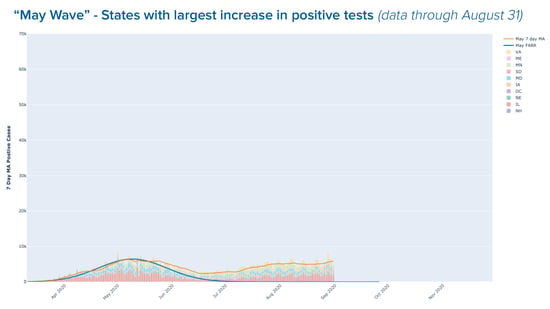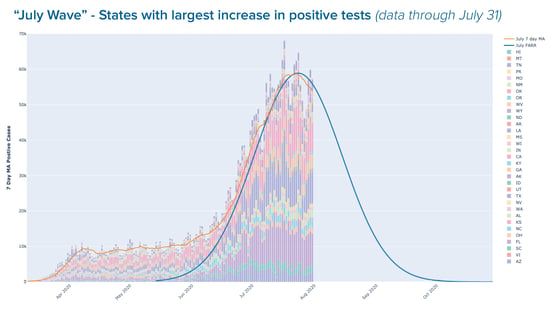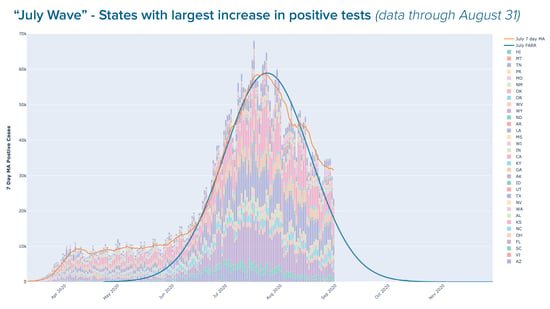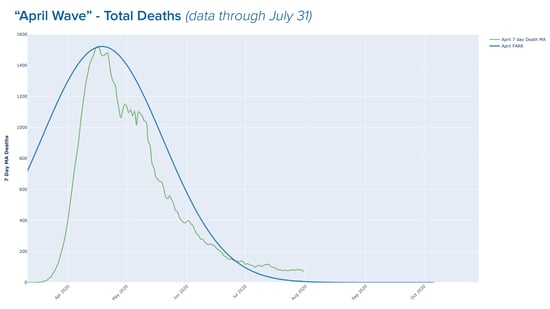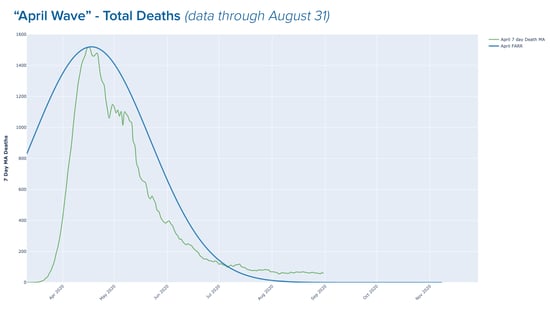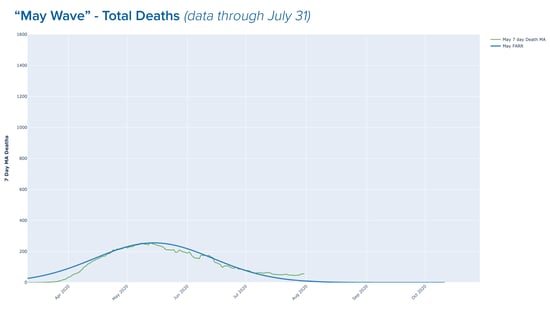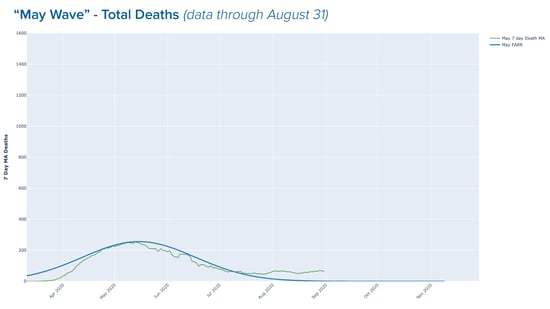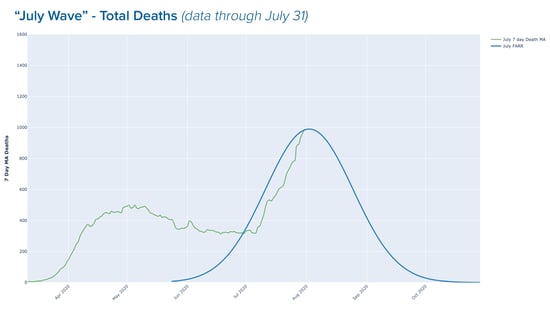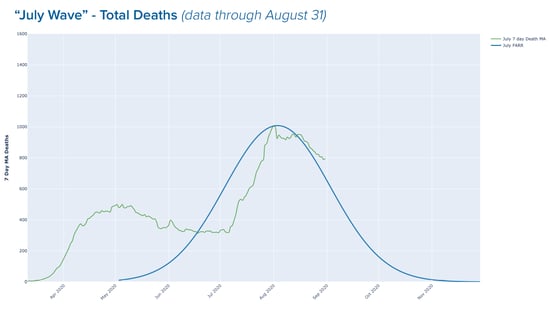Counterpoint
Hal Andrews | August 31, 2020Farr’s Law, COVID-19 and Inconvenient Truth
Our hometown of Music City is known for what the inestimable Harlan Howard referred to as “three chords and the truth.” Unfortunately, the truth is that no one knows enough about a pandemic that has ravaged the planet for months. At best, the world has “a tiger by the tail” when it comes to COVID-19.
William Farr noted that “the death rate is a fact; anything beyond this is an inference”, but at some point, facts are sufficiently abundant to make redoubtable inferences. In the words of Vice President Al Gore, a former Music City resident, the facts of COVID-19 suggest many “inconvenient truths.”
First, nursing homes are tragically a vector for the virus, for reasons that government officials, policy makers and healthcare executives have long understood.[1],[2] Second, obesity is a critically complicating factor for COVID-19, and America has the highest rate of obesity in the OECD.[3],[4] Third, the mainstream media lacks even an elementary understanding of public health and the healthcare delivery system, especially with respect to hospital operations.
Regrettably, lack of knowledge has not served as a prior restraint for the media’s coverage of the COVID-19 pandemic. The well-documented inconvenient truth for health systems is that the media’s coverage of the pandemic has dissuaded patients from seeking essential care.[5],[6],[7],[8],[9],[10]
The media’s failure to report incontrovertible facts does not change them:
- More than 99% of the people diagnosed with COVID-19 survive;
- As compared to the CDC’s most recent data for 2018, the mortality of COVID-19 per 100,000 population is:
- Approximately three times less than the mortality rate for heart disease and cancer and only 15% higher than mortality from “unintentional injuries”;
- Similar to that of chronic lower respiratory disease and stroke, excluding the mortality rates of COVID-19 in the New York metropolitan area;
- Equal to or lower than influenza in 10 states. [11],[12]
In light of what is now known, it is incumbent on hospitals and health systems to apply that knowledge. Farr’s Law offers no guidance as to whether volumes will ever return to pre-pandemic levels, but it is helpful in understanding when that might begin to happen.
As we have repeatedly suggested (data from July 31 and August 16), Farr’s Law suggests that there have been three distinct “outbreaks” of COVID-19 in the United States. The “April Wave” was primarily centered in the Northeastern U.S., Colorado and Michigan; the “May Wave” unfolded in the Upper Midwest and part of the Eastern Seaboard; and the “July Wave” was broadly dispersed throughout the rest of the United States, particularly the Sunbelt. We also noted that the first two “waves” have already tapered off in accordance with Farr’s Law, with the low, but persistent, case positivity in those two regions offering support for the notion that the pandemic is now endemic.[13] Finally, as we first proposed on August 3, if Farr’s Law applies to the “July Wave”, then it is likely to taper off in early October.
Today, we update the data as of August 31:
Once again, and for emphasis, we do not and cannot know whether there will be, as suggested by the Center for Infectious Disease Research and Policy, a second wave of COVID-19, a true resurgence throughout the entire United States akin to the Spanish Flu.[14] Even so, we are encouraged by a recent study by National Bureau of Economic Research that reports “both the effective reproduction numbers and transmission rates of COVID-19 fell from widely dispersed initial levels and the effective reproduction number has hovered around one after the first 30 days of the epidemic virtually everywhere in the world.”[15]
In a sense, the NBER study is unsurprising at its core, as the general history of viruses also suggests that the virulence of COVID-19 will largely abate. When that happens, hospitals will be the only institution in the world whose "new normal" is the "new old normal."
In the “new old normal”, certain inconvenient truths will remain. Will regulations and payment policy and patient preference on health care delivery continue to encourage patients to seek care somewhere other than a hospital? Yes. Will the number of commercially insured patients decline? Yes, and dramatically in some markets. Will the prevalence of chronic diseases change? No. Will the Chief Medical Officer need to remind the medical staff that hand-washing hygiene is important? Probably.
When that will happen is the question facing all health systems. If Dr. Farr were a fan of country music, his favorite song might be Vern Gosdin’s “Do You Believe Me Now?”. Whether or not you believe Farr’s Law, COVID-19 cannot stop time, and 2021 starts in 122 days. Is your system prepared for the new old normal?
[1] https://jamanetwork.com/channels/health-forum/fullarticle/2763666
[2] https://www.chcf.org/blog/why-nursing-homes-become-covid-19-hot-spots/
[3] https://www.cidrap.umn.edu/news-perspective/2020/08/obesity-metabolic-syndrome-tied-risk-covid-infection-severity
[4] https://www.oecd.org/health/obesity-update.htm
[5] https://catalyst.nejm.org/doi/full/10.1056/CAT.20.0193
[6] https://www.emergencyphysicians.org/globalassets/emphysicians/all-pdfs/acep-mc-covid19-april-poll-analysis.pdf
[7] https://ascopost.com/news/april-2020/survey-shows-covid-19-pandemic-is-affecting-patients-access-to-cancer-care/
[9] https://www.washingtonpost.com/health/wooing-patients-back-is-tricky-business-as-coronavirus-spikes-in-many-states/2020/07/13/b86d676e-bbb1-11ea-8cf5-9c1b8d7f84c6_story.html
[10] https://www.cnn.com/2020/05/12/health/coronavirus-heart-patients-hospital-study/index.html
[11] https://covid.cdc.gov/covid-data-tracker/#cases
[12] https://www.cdc.gov/nchs/products/databriefs/db355.htm
[13] https://www.sciencedirect.com/science/article/pii/S2666535220300306
[14] https://www.cidrap.umn.edu/sites/default/files/public/downloads/cidrap-covid19-viewpoint-part1_0.pdf
- Farr's Law
